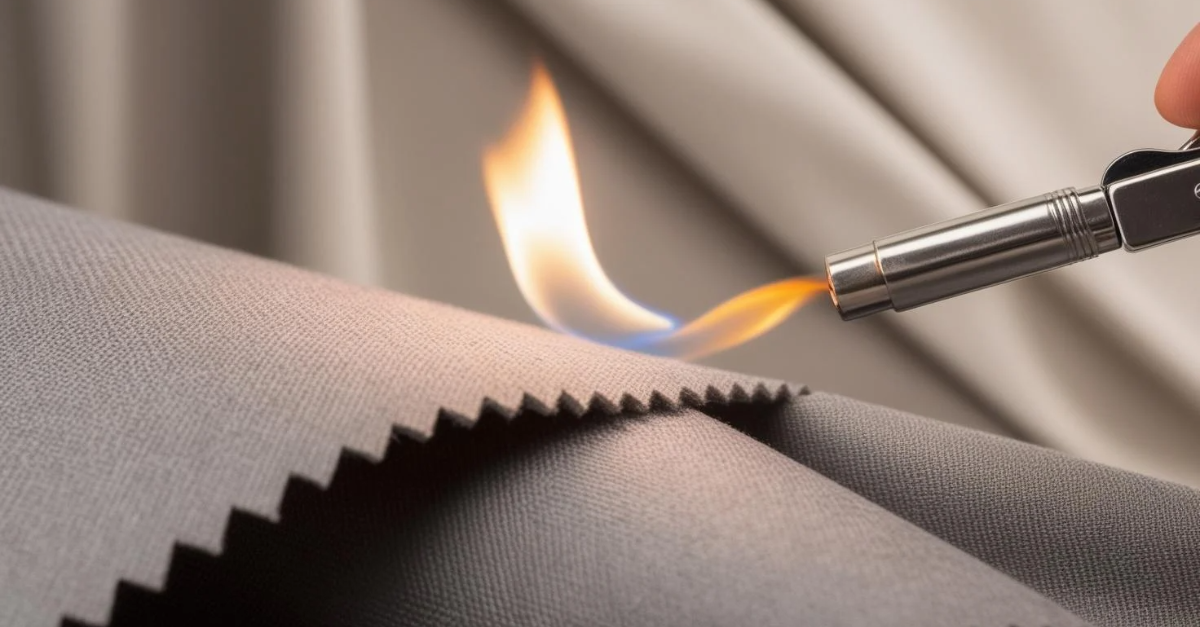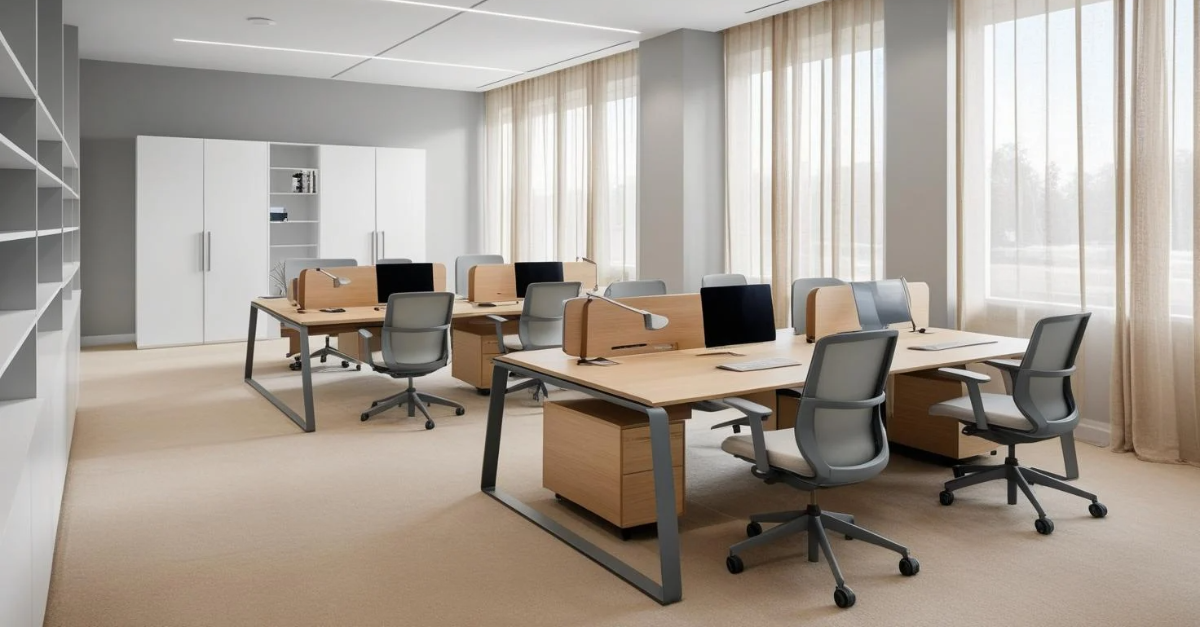Guide to fireproof materials: Understanding and applying Fire-resistant solutions

In a world where safety is a priority, the use of fireproof materials in various applications has become essential. Manufacturers of fireproof fabrics, such as Dabedan, play a crucial role in providing solutions that protect both people and structures. In this article, we will explore what fireproof materials are, their types, applications, and the advantages of choosing Dabedan’s flame-resistant fabrics.
What’s a fireproof material?
A fireproof material is one that possesses excellent fire resistance, either by delaying its combustion, limiting its spread, or maintaining its structural integrity in the event of a fire. These materials can be natural or synthetic, and their choice will depend on the specific application and the relevant safety regulations.
Types of fireproof materials
Fireproof materials are primarily divided into two categories: natural and synthetic.
Natural
Among natural materials, asbestos was widely used due to its excellent fire resistance properties. However, due to the health risks associated with asbestos, its use has significantly declined. Other natural materials include:
- Wool: Wool has an inherent ability to resist fire due to its chemical composition. It is commonly used in fire blankets and protective clothing.
- Silica: Silica fibres can withstand high temperatures and are often used in firefighting suits and protective barriers.
- Clay: Used in firebricks and ceramics, clay provides excellent insulation and fire resistance, making it suitable for kilns and fireplaces.
Synthetic
Synthetic materials include a variety of compounds specifically developed to offer fire protection. These include:
- Aramid fibres (e.g., Kevlar and Nomex): These high-performance materials are used in fire-resistant clothing for firefighters and industrial workers due to their durability and excellent fire resistance properties.
- Treated fabrics: Fabrics treated with flame retardant chemicals, such as cotton treated with borax or ammonium phosphate, are used in a wide range of applications, from furniture upholstery to curtains.
- Advanced polymers: Materials such as Polyetherimide (PEI) and Polyphenylene Sulphide (PPS) not only resist fire but also offer durability and flexibility for different applications, including electrical insulation and automotive components.
Application of fireproof materials
Fireproof materials find applications across multiple sectors, each with specific safety and performance requirements.
Residential Buildings
Fireproof materials are essential in the construction of safe homes. They are used in insulation, structures, cladding, and decorative elements to prevent the spread of fire, protect escape routes, and provide valuable time for occupants to escape.
Commercial and Industrial Structures
En entornos comerciales e industriales, los riesgos de incendio pueden ser aún mayores. Los materiales ignífugos son cruciales para proteger equipos, bienes y vidas humanas. Se aplican en sistemas de protección pasiva contra incendios, como barreras contra el fuego, sellos de penetración y revestimientos ignífugos para vigas de acero.
Transportation
Vehicles, whether land, air, or sea, must have fire safety measures in place. Fireproof materials are used in seats, interior panels, insulation systems, and structural components to minimise risks in the event of an accident.
Clothing
Clothing made from fireproof fabrics is indispensable for professionals working in hazardous environments, such as firefighters, welders, and industrial workers. These textiles are designed not to ignite easily and to provide effective protection against heat and flames.

Fireproofing Methods
There are several methods to apply fire protection to materials and structures, each with its specific purpose and benefits.
Structural Fireproofing
Structural fireproofing is essential for safeguarding a building’s critical components, such as steel beams and columns, from the devastating effects of fire. This method involves:
- Intumescent coatings: These coatings are applied to structural steel elements. When exposed to high temperatures during a fire, intumescent coatings swell and form a thick, insulating layer. This expansion delays the temperature increase of the steel, thereby maintaining its load-bearing capacity for an extended period.
- Fire-resistant sprays: Similar to intumescent coatings, fire-resistant sprays provide a protective barrier that insulates structural elements from heat. These sprays adhere to various surfaces and can be applied quickly to achieve fire resistance.
- Fire-resistant boards and blankets: Used in conjunction with coatings or sprays, fire-resistant boards and blankets offer additional protection. They are installed around structural members to enhance fire resistance and prevent the spread of flames.
Structural fireproofing not only ensures the structural integrity of buildings during a fire but also provides crucial time for evacuation and firefighting efforts.
Passive Fire Protection
Passive fire protection relies on physical barriers and structural elements to contain fire and limit its spread within a building. Key components of passive fire protection include:
- Compartmentalisation: Dividing a building into compartments with fire-resistant walls and floors helps prevent the rapid spread of fire from one area to another. This containment strategy minimises property damage and enhances occupant safety.
- Fire doors: Fire-rated doors are designed to withstand fire for a specified period. They serve as critical barriers, slowing down the spread of fire and smoke between compartments or rooms.
- Penetration seals: These seals are installed around pipes, cables, and ducts that pass through fire-rated walls and floors. They prevent fire and smoke from penetrating these openings, maintaining the integrity of compartmentalisation.
Passive fire protection measures are integral to building design and construction, ensuring that fire incidents are contained and their impact is minimised.
Active Fire Protection
Active fire protection systems are designed to detect, control, and extinguish fires promptly after they start. These systems include:
- Automatic sprinkler systems: Perhaps the most widely recognised active fire protection system, automatic sprinklers are strategically installed throughout a building. They activate independently when heat from a fire causes a sprinkler head to release water. Sprinkler systems effectively suppress fires, preventing them from spreading and reducing heat and smoke damage.
- Fire extinguishers: Portable fire extinguishers are essential firefighting tools placed in accessible locations throughout buildings. They enable occupants to respond quickly to small fires, providing initial suppression before professional firefighters arrive.
Fire alarm systems: Early detection of fire is critical for prompt evacuation and effective firefighting. Fire alarm systems consist of smoke detectors, heat detectors, and manual pull stations. These systems alert building occupants and emergency responders to the presence of smoke or heat, initiating timely evacuation procedures.
Active fire protection systems work in tandem with passive measures to enhance overall fire safety within buildings. Their proactive approach ensures swift response and mitigation of fire hazards, safeguarding lives and property.
Characteristics of fireproof fabrics
- Flame resistance: They do not ignite easily and self-extinguish quickly.
- Low thermal conductivity: They reduce heat transfer.
- Dimensional stability: They maintain their shape and properties at high temperatures.
- Tensile strength: They do not tear or break easily under tension.
- Durability: They resist wear and abrasion.
Why choose Dabedan flame resistant fabrics?
Dabedan es líder en la fabricación de telas ignífugas de alta calidad, diseñadas para ofrecer una protección superior en una variedad de aplicaciones. Las telas resistentes al fuego de Dabedan destacan por su excelente resistencia al fuego, durabilidad y calidad. Nuestros productos están diseñados para cumplir con los estándares de seguridad y rendimiento más estrictos, garantizando que tanto las personas como las estructuras estén protegidas en caso de incendio.
Choosing Dabedan’s fireproof fabrics means opting for an additional layer of protection that can make a difference in critical situations. Our products are backed by years of research and development, ensuring that we offer cutting-edge fire protection solutions.
In summary, fireproof materials are essential for a wide range of applications, from construction to the manufacture of protective clothing. Understanding the different types and methods of fire protection can help make informed decisions about safety. With Dabedan’s flame-resistant fabrics, you can be confident that you are choosing the best in fire protection.
Contact us if you need more information about our products.
Subscribe to our newsletter
Receive all communications in your email to stay up to date with our news, as well as news and advice about the sector.
Latest published articles
Do you need advice?
We collaborate with you to develop custom designs tailored to the needs of each project, creating the fabric according to aesthetic, quality, or usage requirements.
Get in touch with us, and we will advise you on our products, or request a free sample.




